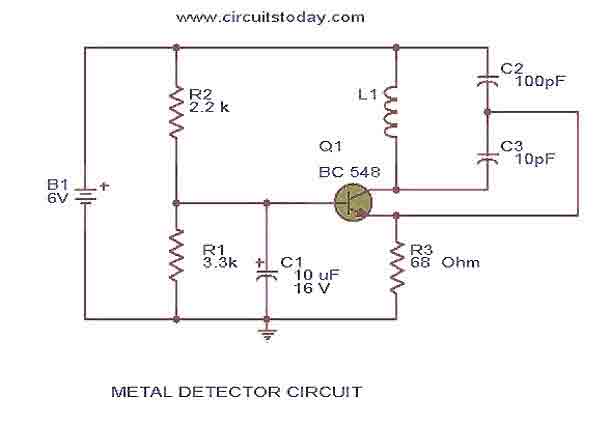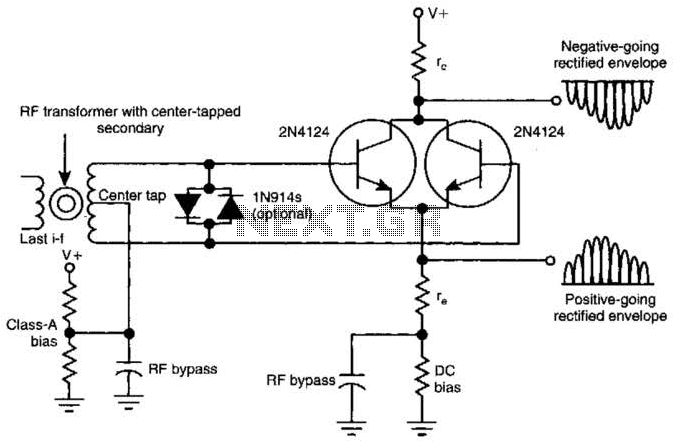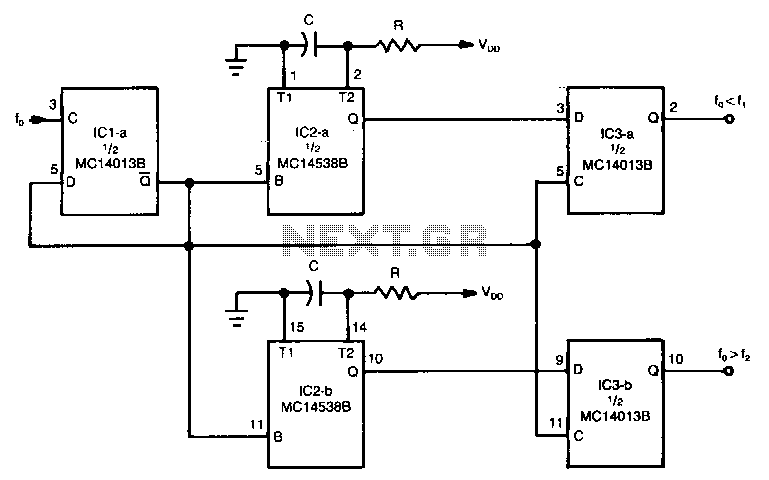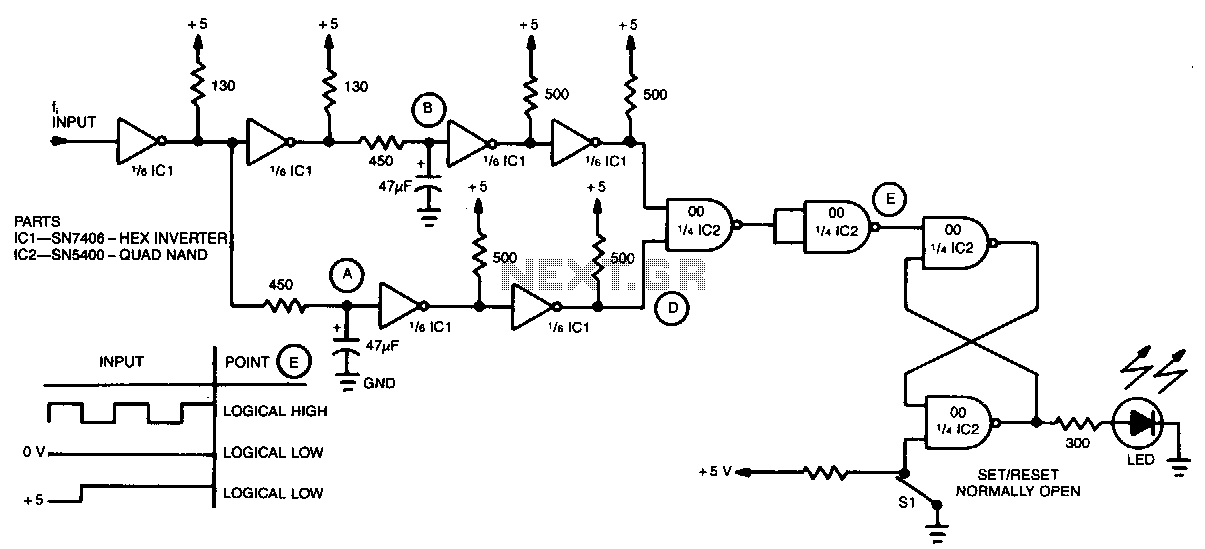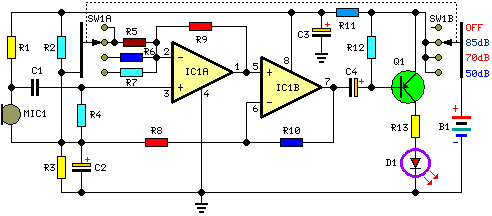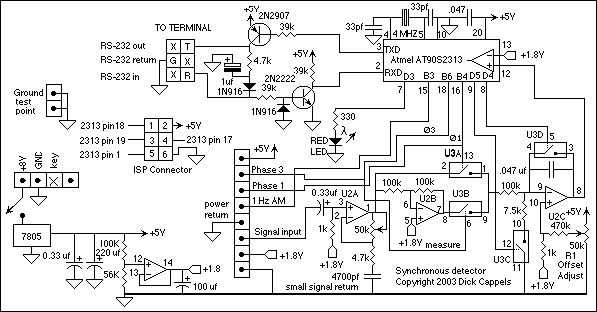
Two-component metal detector
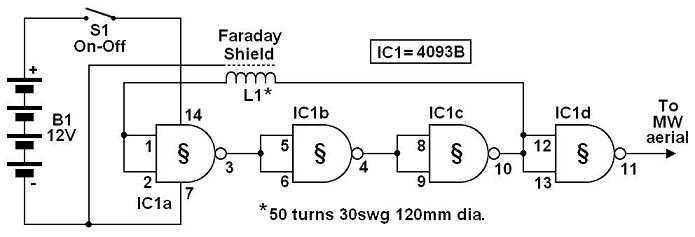
The circuit shown must represent the limits of simplicity for a metal detector. It uses a single 4093 quad Schmitt NAND IC and a search coil -- and of course a switch and batteries. A lead from IC1d pin 11 needs to be attached to a MW radio aerial, or should be wrapped around the radio. If the radio has a BFO switch, switch this ON.
The described circuit is a basic metal detector utilizing the 4093 quad Schmitt NAND IC, which is known for its ability to provide clean switching signals and is suitable for low-frequency applications such as metal detection. The circuit operates on a simple principle where the search coil acts as an inductor, generating a signal in response to the presence of metallic objects.
The 4093 IC consists of four independent NAND gates, but only one gate is utilized in this configuration. The output from one of the gates (IC1d) is connected to a medium wave (MW) radio aerial, which serves as a receiver for the electromagnetic signals induced by the search coil. The connection to the radio is crucial, as it allows the detection of the frequency changes caused by nearby metallic objects.
The search coil is typically constructed by winding a specific number of turns of insulated wire around a non-conductive form. The inductance of the coil is a critical parameter, as it determines the sensitivity of the metal detector. The circuit is powered by batteries, and a switch is included to turn the device on and off, conserving battery life when not in use.
For optimal performance, if the radio is equipped with a Beat Frequency Oscillator (BFO) switch, it should be activated. The BFO switch allows the radio to detect frequency variations, enhancing the ability to identify the presence of metal. When a metallic object is detected, the inductance of the search coil changes, resulting in a shift in the frequency detected by the radio, which can be heard as a change in tone or volume.
This simple yet effective design exemplifies the fundamental principles of metal detection technology, making it an excellent project for electronics enthusiasts and beginners in the field.The circuit shown must represent the limits of simplicity for a metal detector. It uses a single 4093 quad Schmitt NAND IC and a search coil -- and of course a switch and batteries. A lead from IC1d pin 11 needs to be attached to a MW radio aerial, or should be wrapped around the radio.
If the radio has a BFO switch, switch this ON. 🔗 External reference
The described circuit is a basic metal detector utilizing the 4093 quad Schmitt NAND IC, which is known for its ability to provide clean switching signals and is suitable for low-frequency applications such as metal detection. The circuit operates on a simple principle where the search coil acts as an inductor, generating a signal in response to the presence of metallic objects.
The 4093 IC consists of four independent NAND gates, but only one gate is utilized in this configuration. The output from one of the gates (IC1d) is connected to a medium wave (MW) radio aerial, which serves as a receiver for the electromagnetic signals induced by the search coil. The connection to the radio is crucial, as it allows the detection of the frequency changes caused by nearby metallic objects.
The search coil is typically constructed by winding a specific number of turns of insulated wire around a non-conductive form. The inductance of the coil is a critical parameter, as it determines the sensitivity of the metal detector. The circuit is powered by batteries, and a switch is included to turn the device on and off, conserving battery life when not in use.
For optimal performance, if the radio is equipped with a Beat Frequency Oscillator (BFO) switch, it should be activated. The BFO switch allows the radio to detect frequency variations, enhancing the ability to identify the presence of metal. When a metallic object is detected, the inductance of the search coil changes, resulting in a shift in the frequency detected by the radio, which can be heard as a change in tone or volume.
This simple yet effective design exemplifies the fundamental principles of metal detection technology, making it an excellent project for electronics enthusiasts and beginners in the field.The circuit shown must represent the limits of simplicity for a metal detector. It uses a single 4093 quad Schmitt NAND IC and a search coil -- and of course a switch and batteries. A lead from IC1d pin 11 needs to be attached to a MW radio aerial, or should be wrapped around the radio.
If the radio has a BFO switch, switch this ON. 🔗 External reference
